Food waste refers to the wastage generated during food processing and supply chain activities such as transportation, and distribution.Food waste management can be described as those activities and actions which are mandatory for the accomplishment of waste from the point of its initiation to the end of its clearance. The process of food waste management includes collection, transportation, treatment, and disposal of waste along with regulations and proper monitoring. One of the main reasons for the growth of the food waste management market is the food processing wastage that includes agricultural produce processing, meat, poultry & seafood processing wastage and wastes from different types of food processing.
The factors driving the market's growth are rapid industrialization and urbanization across the world, especially in developing countries; the growing importance and usage of organic waste in the production of fertilizers and animal feed has driven the growth of the market significantly. The harmful effect on the environment due to the combustion of the wastes, which adds to the pollution, is a restraining factor for the market's growth. Many large companies are looking forward to investing in pioneering solutions to solve food waste management issues, which is an excellent opportunity for the development of the market.
This study delivers a comprehensive analysis of type, process, application and region. The type segment includes fruits & vegetables, meat, fish & seafood, cereals, dairy products, and processed foods. The fruits & vegetable segment held the biggest market share in 2020 owing to the lack of proper storage, processing, and handling of the produce. The cereals segment is expected to witness significant growth mainly due to the lack of knowledge among the consumers about the preservation and storage practices of cereals, leading to a lot of wastage.The process segment includes aerobic digestion, anaerobic digestion, combustion/incineration, and others. The anaerobic digestion segment held the largest market share in 2020 owing to the benefits of treating the food waste with anaerobic digestion, such as no pathogens, which then limits the spread of diseases and odor. It also promotes sanitation and hygiene. Combustion/incineration also held a leading market as it can be used for all types of food wastes which is helpful in saving the costs of segregating the waste.The application segment includes fertilizers, animal feed, biofuel, and power generation. The animal feed segment held the biggest market share in 2020. Food waste can be processed using a rendering technique and fed to the livestock without incurring any additional costs.
The market has been divided into North America, Europe, Asia-Pacific, Middle East & Africa, and South America. North America held the most significant market share in 2020 owing to the Solid Waste Association of North America, which has supported and offered various practices and services, namely, integrated solid waste management and recycling of residential waste. Europe expects significant growth primarily due to excessive shopping, overproduction, and improper food management. The countries in Asia-Pacific are also rapidly adopting food waste management due to wastage of food in transit during exports to European and North American countries.
Some of the key players operating in the food waste management market are Republic Services, Inc. (U.S.), Stericycle, Inc. (U.S.), Andritz Ag (Austria), Waste Management, Inc. (U.S.), Veolia Environnement S.A. (France), Covanta Holding Corporation (U.S.), and Waste Connections, Inc. (Canada), Recology Inc., DeIorio's Foods Inc., FCC Environment Ltd., CT Environmental Group Ltd., Clean Harbors, Inc.
Food Waste Management Market Analysis and Forecast, Type
Food Waste Management Market Analysis and Forecast, Process
Food Waste Management Market Analysis and Forecast, Application
Food Waste Management Market Analysis and Forecast, Region
Report Description:
1. Introduction
1.1. Objectives of the Study
1.2. Market Definition
1.3. Research Scope
1.4. Currency
1.5. Key Target Audience
2. Research Methodology and Assumptions
3. Executive Summary
4. Premium Insights
4.1. Porter’s Five Forces Analysis
4.2. Value Chain Analysis
4.3. Top Investment Pockets
4.3.1. Market Attractiveness Analysis By Type
4.3.2. Market Attractiveness Analysis By Process
4.3.3. Market Attractiveness Analysis By Application
4.3.4. Market Attractiveness Analysis By Region
4.4. Industry Trends
5. Market Dynamics
5.1. Market Evaluation
5.2. Drivers
5.2.1. Rapid industrialization and urbanization
5.2.2. Use of organic waste in the procession of fertilizers and animal feed
5.3. Restraints
5.3.1. Harmful effect on environment due to pyre techniques
5.4. Opportunities
5.4.1. Companies looking to invest in pioneering solutions
6. Global Food Waste Management Market Analysis and Forecast, By Type
6.1. Segment Overview
6.2. Fruits & Vegetables
6.3. Meat, Fish & Sea Food
6.4. Cereals
6.5. Dairy Products
6.6. Processed Foods
7. Global Food Waste Management Market Analysis and Forecast, By Process
7.1. Segment Overview
7.2. Aerobic Digestion
7.3. Anaerobic Digestion
7.4. Combustion/Incineration
7.5. Others
8. Global Food Waste Management Market Analysis and Forecast, By Application
8.1. Segment Overview
8.2. Fertilizers
8.3. Animal Feed
8.4. Biofuel
8.5. Power Generation
9. Global Food Waste Management Market Analysis and Forecast, By Regional Analysis
9.1. Segment Overview
9.2. North America
9.2.1. U.S.
9.2.2. Canada
9.2.3. Mexico
9.3. Europe
9.3.1. Germany
9.3.2. France
9.3.3. U.K.
9.3.4. Italy
9.3.5. Spain
9.4. Asia-Pacific
9.4.1. Japan
9.4.2. China
9.4.3. India
9.5. South America
9.5.1. Brazil
9.6. Middle East and Africa
9.6.1. UAE
9.6.2. South Africa
10. Global Food Waste Management Market-Competitive Landscape
10.1. Overview
10.2. Market Share of Key Players in Global Food Waste Management Market
10.2.1. Global Company Market Share
10.2.2. North America Company Market Share
10.2.3. Europe Company Market Share
10.2.4. Asia-Pacific Company Market Share
10.3. Competitive Situations and Trends
10.3.1. Process Launches and Developments
10.3.2. Partnerships, Collaborations, and Agreements
10.3.3. Mergers & Acquisitions
10.3.4. Expansions
11. Company Profiles
11.1. Republic Services, Inc.
11.1.1. Business Overview
11.1.2. Company Snapshot
11.1.3. Company Market Share Analysis
11.1.4. Company Process Portfolio
11.1.5. Recent Developments
11.1.6. SWOT Analysis
11.2. Stericycle, Inc.
11.2.1. Business Overview
11.2.2. Company Snapshot
11.2.3. Company Market Share Analysis
11.2.4. Company Process Portfolio
11.2.5. Recent Developments
11.2.6. SWOT Analysis
11.3. Andritz Ag
11.3.1. Business Overview
11.3.2. Company Snapshot
11.3.3. Company Market Share Analysis
11.3.4. Company Process Portfolio
11.3.5. Recent Developments
11.3.6. SWOT Analysis
11.4. Waste Management, Inc.
11.4.1. Business Overview
11.4.2. Company Snapshot
11.4.3. Company Market Share Analysis
11.4.4. Company Process Portfolio
11.4.5. Recent Developments
11.4.6. SWOT Analysis
11.5. Veolia Environnement S.A.
11.5.1. Business Overview
11.5.2. Company Snapshot
11.5.3. Company Market Share Analysis
11.5.4. Company Process Portfolio
11.5.5. Recent Developments
11.5.6. SWOT Analysis
11.6. Covanta Holding Corporation
11.6.1. Business Overview
11.6.2. Company Snapshot
11.6.3. Company Market Share Analysis
11.6.4. Company Process Portfolio
11.6.5. Recent Developments
11.6.6. SWOT Analysis
11.7. Waste Connections, Inc.
11.7.1. Business Overview
11.7.2. Company Snapshot
11.7.3. Company Market Share Analysis
11.7.4. Company Process Portfolio
11.7.5. Recent Developments
11.7.6. SWOT Analysis
11.8. Recology Inc.
11.8.1. Business Overview
11.8.2. Company Snapshot
11.8.3. Company Market Share Analysis
11.8.4. Company Process Portfolio
11.8.5. Recent Developments
11.8.6. SWOT Analysis
11.9. DeIorio's Foods Inc.
11.9.1. Business Overview
11.9.2. Company Snapshot
11.9.3. Company Market Share Analysis
11.9.4. Company Process Portfolio
11.9.5. Recent Developments
11.9.6. SWOT Analysis
11.10. FCC Environment Ltd.
11.10.1. Business Overview
11.10.2. Company Snapshot
11.10.3. Company Market Share Analysis
11.10.4. Company Process Portfolio
11.10.5. Recent Developments
11.10.6. SWOT Analysis
11.11. CT Environmental Group Ltd.
11.11.1. Business Overview
11.11.2. Company Snapshot
11.11.3. Company Market Share Analysis
11.11.4. Company Process Portfolio
11.11.5. Recent Developments
11.11.6. SWOT Analysis
11.12. Clean Harbors, Inc.
11.12.1. Business Overview
11.12.2. Company Snapshot
11.12.3. Company Market Share Analysis
11.12.4. Company Process Portfolio
11.12.5. Recent Developments
11.12.6. SWOT Analysis
List of Table
1. Global Food Waste Management Market, By Type, 2018-2028 (USD Billion)
2. Global Fruits & Vegetables, Food Waste Management Market, By Region, 2018-2028 (USD Billion)
3. GlobalMeat, fish & seafood, Food Waste Management Market, By Region, 2018-2028 (USD Billion)
4. GlobalCereals, Food Waste Management Market, By Region, 2018-2028 (USD Billion)
5. GlobalDairy Products, Food Waste Management Market, By Region, 2018-2028 (USD Billion)
6. GlobalProcessed Foods, Food Waste Management Market, By Region, 2018-2028 (USD Billion)
7. Global Food Waste Management Market, By Process, 2018-2028 (USD Billion)
8. Global Aerobic Digestion, Food Waste Management Market, By Region, 2018-2028 (USD Billion)
9. Global Anaerobic Digestion , Food Waste Management Market, By Region, 2018-2028 (USD Billion)
10. Global Combustion/Incineration, Food Waste Management Market, By Region, 2018-2028 (USD Billion)
11. Global Others, Food Waste Management Market, By Region, 2018-2028 (USD Billion)
12. Global Food Waste Management Market, ByApplication, 2018-2028 (USD Billion)
13. Global Fertilizers, Food Waste Management Market, By Region, 2018-2028 (USD Billion)
14. Global Animal Feed, Food Waste Management Market, By Region, 2018-2028 (USD Billion)
15. Global Biofuel, Food Waste Management Market, By Region, 2018-2028 (USD Billion)
16. Global Power generation, Food Waste Management Market, By Region, 2018-2028 (USD Billion)
17. North America Food Waste Management Market, By Type, 2018-2028 (USD Billion)
18. North America Food Waste Management Market, By Process, 2018-2028 (USD Billion)
19. North America Food Waste Management Market, By Application, 2018-2028 (USD Billion)
20. U.S. Food Waste Management Market, By Type, 2018-2028 (USD Billion)
21. U.S. Food Waste Management Market, By Process, 2018-2028 (USD Billion)
22. U.S. Food Waste Management Market, By Application, 2018-2028 (USD Billion)
23. Canada Food Waste Management Market, By Type, 2018-2028 (USD Billion)
24. CanadaFood Waste Management Market, By Process, 2018-2028 (USD Billion)
25. Canada Food Waste Management Market, By Application, 2018-2028 (USD Billion)
26. Mexico Food Waste Management Market, By Type, 2018-2028 (USD Billion)
27. Mexico Food Waste Management Market, By Process, 2018-2028 (USD Billion)
28. Mexico Food Waste Management Market, By Application, 2018-2028 (USD Billion)
29. Europe Food Waste Management Market, By Type, 2018-2028 (USD Billion)
30. Europe Food Waste Management Market, By Process, 2018-2028 (USD Billion)
31. Europe Food Waste Management Market, By Application, 2018-2028 (USD Billion)
32. Germany Food Waste Management Market, By Type, 2018-2028 (USD Billion)
33. Germany Food Waste Management Market, By Process, 2018-2028 (USD Billion)
34. Germany Food Waste Management Market, By Application, 2018-2028 (USD Billion)
35. France Food Waste Management Market, By Type, 2018-2028 (USD Billion)
36. France Food Waste Management Market, By Process, 2018-2028 (USD Billion)
37. France Food Waste Management Market, By Application, 2018-2028 (USD Billion)
38. U.K. Food Waste Management Market, By Type, 2018-2028 (USD Billion)
39. U.K. Food Waste Management Market, By Process, 2018-2028 (USD Billion)
40. U.K. Food Waste Management Market, By Application, 2018-2028 (USD Billion)
41. Italy Food Waste Management Market, By Type, 2018-2028 (USD Billion)
42. Italy Food Waste Management Market, By Process, 2018-2028 (USD Billion)
43. Italy Food Waste Management Market, By Application, 2018-2028 (USD Billion)
44. Spain Food Waste Management Market, By Type, 2018-2028 (USD Billion)
45. Spain Food Waste Management Market, By Process, 2018-2028 (USD Billion)
46. Spain Food Waste Management Market, By Application, 2018-2028 (USD Billion)
47. Asia Pacific Food Waste Management Market, By Type, 2018-2028 (USD Billion)
48. Asia Pacific Food Waste Management Market, By Process, 2018-2028 (USD Billion)
49. Asia Pacific Food Waste Management Market, By Application, 2018-2028 (USD Billion)
50. Japan Food Waste Management Market, By Type, 2018-2028 (USD Billion)
51. Japan Food Waste Management Market, By Process, 2018-2028 (USD Billion)
52. Japan Food Waste Management Market, By Application, 2018-2028 (USD Billion)
53. China Food Waste Management Market, By Type, 2018-2028 (USD Billion)
54. China Food Waste Management Market, By Process, 2018-2028 (USD Billion)
55. China Food Waste Management Market, By Application, 2018-2028 (USD Billion)
56. India Food Waste Management Market, By Type, 2018-2028 (USD Billion)
57. India Food Waste Management Market, By Process, 2018-2028 (USD Billion)
58. India Food Waste Management Market, By Application, 2018-2028 (USD Billion)
59. South America Food Waste Management Market, By Type, 2018-2028 (USD Billion)
60. South America Food Waste Management Market, By Process, 2018-2028 (USD Billion)
61. South America Food Waste Management Market, By Application, 2018-2028 (USD Billion)
62. Brazil Food Waste Management Market, By Type, 2018-2028 (USD Billion)
63. Brazil Food Waste Management Market, By Process, 2018-2028 (USD Billion)
64. Brazil Food Waste Management Market, By Application, 2018-2028 (USD Billion)
65. Middle East and Africa Food Waste Management Market, By Type, 2018-2028 (USD Billion)
66. Middle East and Africa Food Waste Management Market, By Process, 2018-2028 (USD Billion)
67. Middle East and Africa Food Waste Management Market, By Application, 2018-2028 (USD Billion)
68. UAE Food Waste Management Market, By Type, 2018-2028 (USD Billion)
69. UAE Food Waste Management Market, By Process, 2018-2028 (USD Billion)
70. UAE Food Waste Management Market, By Application, 2018-2028 (USD Billion)
71. South Africa Food Waste Management Market, By Type, 2018-2028 (USD Billion)
72. South Africa Food Waste Management Market, By Process, 2018-2028 (USD Billion)
73. South Africa Food Waste Management Market, By Application, 2018-2028 (USD Billion)
List of Figures
1. Global Food Waste Management Market Segmentation
2. Global Food Waste Management Market: Research Methodology
3. Market Size Estimation Methodology: Bottom-Up Approach
4. Market Size Estimation Methodology: Top-Down Approach
5. Data Triangulation
6. Porter’s Five Forces Analysis
7. Value Chain Analysis
8. Global Food Waste Management Market Attractiveness Analysis By Type
9. Global Food Waste Management Market Attractiveness Analysis By Process
10. Global Food Waste Management Market Attractiveness Analysis By Application
11. Global Food Waste Management Market Attractiveness Analysis By Region
12. Global Food Waste Management Market: Dynamics
13. Global Food Waste Management Market Share by Type(2021 & 2028)
14. Global Food Waste Management Market Share by Process (2021 & 2028)
15. Global Food Waste Management Market Share by Application (2021 & 2028)
16. Global Food Waste Management Market Share by Regions (2021 & 2028)
17. Global Food Waste Management Market Share by Company (2020)
Market research is a method of gathering, assessing and deducing data & information about a particular market. Market research is very crucial in these days. The techniques analyze about how a product/service can be offered to the market to its end-customers, observe the impact of that product/service based on the past customer experiences, and cater their needs and demands. Owing to the successful business ventures, accurate, relevant and thorough information is the base for all the organizations because market research report/study offers specific market related data & information about the industry growth prospects, perspective of the existing customers, and the overall market scenario prevailed in past, ongoing present and developing future. It allows the stakeholders and investors to determine the probability of a business before committing substantial resources to the venture. Market research helps in solving the marketing issues challenges that a business will most likely face.
Market research is valuable because of the following reasons:
Our research report features both the aspects; qualitative and quantitative. Qualitative part provides insights about the market driving forces, potential opportunities, customer’s demands and requirement which in turn help the companies to come up with new strategies in order to survive in the long run competition. The quantitative segment offers the most credible information related to the industry. Based on the data gathering, we use to derive the market size and estimate their future growth prospects on the basis of global, region and country.
Our market research process involves with the four specific stages.

Data Collection: This stage of the market research process involves with the gathering and collecting of the market/industry related data from the sources. There are basically two types of research methods:
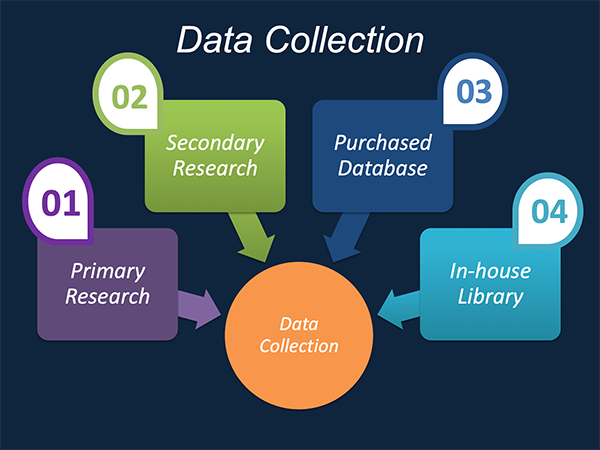
Data Synthesis: This stage includes the evaluation and assessment of all the data acquired from the primary and secondary research. It likewise includes in evaluating the information for any disparity watched while information gathering identified with the market. The data & information is gathered with consideration to the heterogeneity of sources. Scientific and statistical methods are implemented for synthesizing dissimilar information sets and provide the relevant data which is fundamental for formulating strategies. Our organization has broad involvement with information amalgamation where the information goes through different stages:


Market Formulation & Deduction: The last stage includes assigning the data & information in a suitable way in order to derive market size. Analyst reviews and domain based opinions based on holistic approach of market estimation combined with industry investigation additionally features a crucial role in this stage.
This stage includes with the finalization of the market size and numbers that we have gathered from primary and secondary research. With the data & information addition, we ensure that there is no gap in the market information. Market trend analysis is finished by our analysts by utilizing data extrapolation procedures, which give the most ideal figures to the market.
Data Validation: Validation is the most crucial step in the process. Validation & re-validation through scientifically designed technique and process that helps us finalize data-points to be used for final calculations. This stage also involves with the data triangulation process. Data triangulation generally implicates the cross validation and matching the data which has been collected from primary and secondary research methods.





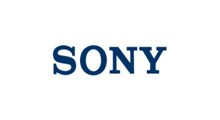

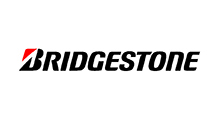

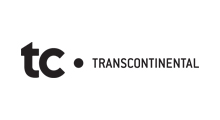















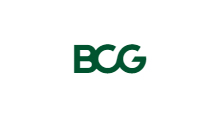


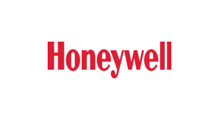

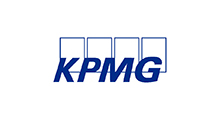
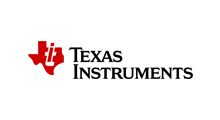



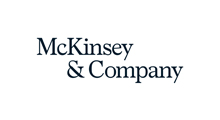

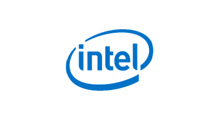







Free Customization
Countries can be added on demand
Free yearly update on purchase of Multi/Corporate User License
Companies served till date

We serve our customers 24x7 for 365 days through calls, emails and live chat options.

Huge database of exceptional market reports bringing market intelligence to your fingertips.

SSL enabled, we offer you various secured payment options for risk free purchase.